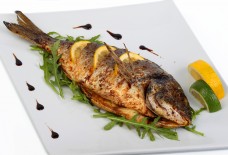The Arabic Ink Cliché
By: Katie Teague/Arab America Contributing Writer
All around, tattoos of every shape and size greet the eye each day. What was once a rarity reserved for the bikers and sailors of society, tattoos are now acceptable, if not, must-have in our time. The tattoo-frenzy of the 21st century required multiple sources of inspiration to keep customers satisfied and returning for more ink. The Arabic language, in addition to other exotic-looking linguistic texts, became an instant target. Unfortunately, a good majority of Arabic tattoo recipients know little about the language or culture, they are permanently engraving on their skin.
In the Middle East, tattoos are highly frowned upon. Islam makes it clear that body ink is against the will of Allah, and therefore is designated as haram, or forbidden. By turning the language into a mainstream tattoo celebrated by the West, it loses respect, authenticity, and value. Unless, of course, individuals with tattoos can connect their ink to the Middle East in a meaningful way.
Most times, however, tattoos in Arabic are picked because they look pretty; sometimes, the individuals do not even know the true meaning of their ink, let alone pronounce it. This seems to be a trend paved by some celebrities, including Angelina Jolie, Selena Gomez, and Rihanna. Those who hold a special connection to Arabic or Middle Eastern culture and exhibit it through tattoos seem to be unique cases.
Luckily, there are Muslims in the Arab world who are breaking the tradition. The Arab Ink Project is a movement of Arabic tattoos which celebrates the language and its beauty, instead of vilifying the fact that it is through permanent ink. The photo-documentary series project was started by a man named Bashar Alaeddin to explore “Arabic culture through art, design, and tattoos and shine a light on a culture little known beyond the Arab world — even to people who visit the region.” Eventually, Alaeddin hopes to spread this positive light on the Middle East throughout the rest of the world:
“I think it’s our responsibility to be able to counter all of this hatred and fear with knowledge and education and art and design. I think art is the best platform to really bring forth new ideas.”
The difference between this and the vast majority of Americans with Arabic tattoos is the purpose. Here, the tattoos are used as space to reflect on Middle Eastern identity and the past. It’s a unique storyboard, and a bold statement given its conflict with religious beliefs. However, for those who seek to get an Arabic tattoo because it looks pretty, a substantial story is lacking.
To read more about the Arabic Ink Project, see this article on CNN, or check out Alaeddin’s page at https://www.arabink.me/
Don’t get me wrong: even the cliché Arabic tattoos “love” and “life” are stunning. Should you choose to dive in and follow the crowd, differentiate yourself from the rest by understanding exactly what it is you are getting into. Not only realize but appreciate the rich culture and meaning behind the inscription designated for your skin. That way, when someone asks about what your tattoo says, you can not only give a translation but provide insight into the beautiful language and world it comes from.
References:
https://www.cnn.com/travel/article/arab-ink-project/index.html



